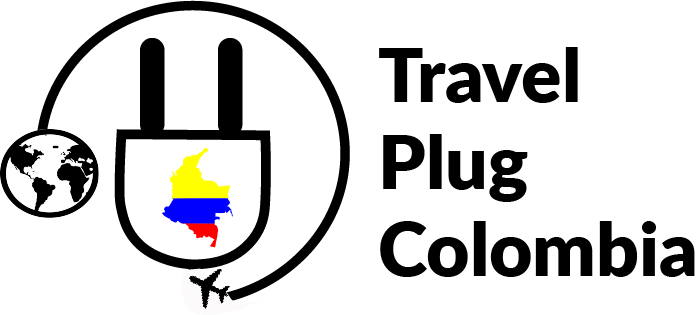Photo by Ákos Helgert
The Caribbean tourist corridor in Colombia, located in the northern part of the country, is made up of the departments of Bolívar, Atlántico, Magdalena, La Guajira, and Cesar, whose combined area of 96,327 km2 is larger than the department of Caquetá and Portugal, a coastal country on the European continent.
In this territory, indigenous people, Africans, and Europeans immortalized their mixture in rhythms, flavors, customs, languages, and architectural forms that adorn the historical Caribbean Eden like a garden. It is bordered by coral reefs, white sand beaches, and sanctuaries of fauna and flora, the result of nature’s creations, which give shape to a land of happy, dreamy, hard-working, thriving people… who have taken their folklore around the world.
This is Gabo’s universe, where the vallenato notes travel to the snows of the sacred mountain of the Arhuacos; where the drums point the way to the first free Maroon people of America; and the swamps, where the change of course of the Magdalena River froze in time architectural relics; and where the gaitas announce the carnival full of colors, music, and joy.
The monumental Sierra embraced by the sea
The Caribbean corridor in Colombia offers a striking variety of national natural parks, wildlife sanctuaries, and small civil society reserves, among others, that extends along the foothills of the Sierra Nevada de Santa Marta and have spaces for visitors to enjoy different nature tourism activities such as:
- Relaxing while sunbathing on the paradisiacal beaches of the Caribbean.
- Enjoy the sea with total freedom from a boat, a sailboat, or a board on the beaches that border the north of South America.
- Discover the underwater worlds of the Caribbean.
- Venture through the coastal lagoons and mangroves in Santa Catalina and Luruaco.
- Have fun photographing the friendly marmoset monkeys in Luruaco, and the colorado monkeys in San Juan Nepomuceno.
- Explore the diversity of fauna and flora in the mystical meeting points of the rivers and the sea.
- Experience the work of the fields in Galapa and learn about the properties of plants from indigenous people in San Juan del Cesar.
- Discover the highest coastal mountainous area in the world in Santa Marta.
- Interact with the jungle and the sea by camping on the beach.
- Live an experience from which you will come out more alive, through the trails of Tayrona.
- Let yourself be carried away by tire by the riverside landscapes of Dibulla.
- Admire the majestic pink flamingos in Riohacha.
- Enjoy a magical sunset at Cabo de la Vela.
- Refresh yourself in the crystal-clear waters of Valledupar.
The mystique of the accordion, the indigenous and palenqueros in the historic Macondian lands.
This corridor is simply culturally exquisite. The musical expressions and celebrations have transcended frontiers, making anyone who hears a cumbia, vallenato or Colombian Tambora want to dance to the sound of the incredible stories of everyday life on the coast. The same ones that have captured the attention of thousands of readers who have imagined the Macondian lands, where the traditions of palenques, ranches, indigenous peoples, and religious rites brought by the colonizers, some described in the works of the Nobel Prize for literature, Gabriel García Márquez, converge.
In this corridor families, groups of friends, couples, or lone tourists will not have time to get bored, not only because of the cultural expressions that abound there but also because it is full of historical attractions elevated to the category of World Heritage and Living Heritage of Colombia. In every corner of the Caribbean the visitor perceives the joy of its people, is enraptured by the gastronomy, and embarks on new experiences when carrying out activities such as:
- Interacting with the Arhuacas indigenous communities in Pueblo Bello; Wayúu in Uribia, Riohacha, Manaure, Kogui in Dibulla, Arhuacos in San Juan and Pueblo Bello.
- Get to know the places where the vallenato folklore is lived and felt.
- Get into the spirit of the celebrations of the Carnival of Barranquilla, the Vallenato Festival in Valledupar, the Francisco el hombre Festival in Riohacha, and the National Cumbia Festival in El Banco.
- Be surprised by the religious celebrations around the Holy Week in Valledupar and Mompox, and the miracles of the Virgin in Riohacha and Puerto Colombia.
- To get to know the World Heritage through the Wayúu palabrero, the Carnival of Barranquilla, and the city of Cartagena de Indias.
- Admire the creativity of the artisans of the Carnival masks in Galapa, and the weavers in Usuacurí, Juan de Acosta, and San Jacinto.
- Take as a souvenir the cosmovision of the indigenous peoples that the artisans masterfully capture in the Arhuacas backpacks in Pueblo Bello and a Wayuú in Uribia, and visit the Macondian lands of Riohacha, Zona Bananera, Aracataca, and Mompox, which inspired the Nobel Prize winner.
- Be amazed by the immortalized scenes in the murals of Riohacha and Juan de Acosta.
- Explore the Lost City, an archaeological jewel of the pre-Hispanic cultures in the Sierra Nevada de Santa Marta.
- Photographing architectural relics of colonial and republican periods in Santa Marta, Cartagena, Mompox, Ciénaga, Barranquilla, and San Sebastian.
- Visit the Cimarrón people, holder of the title of “the first free people of the continent”, in San Basilio de Palenque
- Marvel at the hometown of those who immortalized the stories of the Colombian coast: in music, Lucho Bermúdez (Carmen de Bolívar) and, in literature, Gabriel García Márquez (Aracataca).

